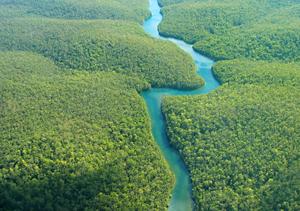THE LATEST
British researchers' modeling unravels the enigma of the Amazon's biodiversity

The Amazon rainforest, with its incredible variety of plant and animal species, has always fascinated scientists. A new study led by the UK Centre for Ecology & Hydrology has used supercomputer modeling to shed light on the rainforest's evolution during the last Ice Age, from approximately 2.6 million to 11,700 years ago. The findings challenge old assumptions and highlight the Amazon's vulnerability to human-induced climate change and land use disruptions.
This study, a collaboration between UKCEH, the Ontario Forest Research Institute, Kiel University in Germany, the Met Office in the UK, INPA in Brazil, and the Field Museum of Natural History in Chicago, integrates advanced climate and vegetation modeling techniques. Dr. Douglas Kelley, the lead author of the study, emphasizes the role of climate fluctuations in shaping the Amazon's past and emphasizes the urgency of addressing contemporary climate challenges.
The study reveals a complex landscape of interconnected woodlands and savannas during the last Ice Age, refuting the idea of isolated "forest islands." Dr. Hiromitsu Sato of the Ontario Forest Research Institute highlights the study's pioneering nature in demystifying the Amazon's biodiversity origins and the potential for using integrated modeling methods to bridge gaps in biodiversity data.
The researchers aim to further trace the divergence of Amazonian species over millennia, shedding light on the evolutionary paths of iconic creatures. Their relentless pursuit of knowledge offers hope for understanding the Amazon's heritage and protecting its unparalleled biodiversity for future generations.
